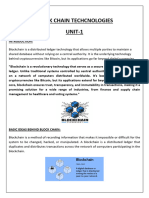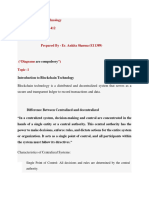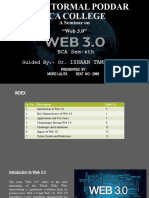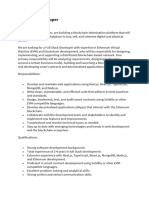0% found this document useful (0 votes)
22 views1 pageNodejs
Blockchain is a decentralized, distributed ledger that records transactions in a verifiable and permanent way by achieving consensus on a shared ledger. It allows for secure and transparent record keeping through cryptographic techniques, distributed consensus mechanisms, and an immutable record of transactions. Key features include decentralization, a distributed ledger of linked transaction blocks, cryptographic security, consensus agreements, potential for smart contracts, transparency, immutable record keeping, and various applications across industries. However, challenges remain regarding scalability, interoperability, regulations, and energy use.
Uploaded by
vaibhavwani008Copyright
© © All Rights Reserved
We take content rights seriously. If you suspect this is your content, claim it here.
Available Formats
Download as TXT, PDF, TXT or read online on Scribd
0% found this document useful (0 votes)
22 views1 pageNodejs
Blockchain is a decentralized, distributed ledger that records transactions in a verifiable and permanent way by achieving consensus on a shared ledger. It allows for secure and transparent record keeping through cryptographic techniques, distributed consensus mechanisms, and an immutable record of transactions. Key features include decentralization, a distributed ledger of linked transaction blocks, cryptographic security, consensus agreements, potential for smart contracts, transparency, immutable record keeping, and various applications across industries. However, challenges remain regarding scalability, interoperability, regulations, and energy use.
Uploaded by
vaibhavwani008Copyright
© © All Rights Reserved
We take content rights seriously. If you suspect this is your content, claim it here.
Available Formats
Download as TXT, PDF, TXT or read online on Scribd
/ 1




















































































